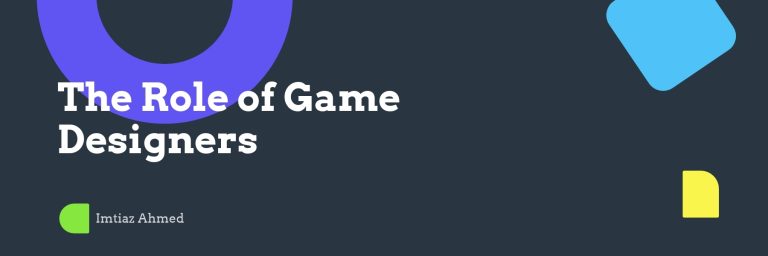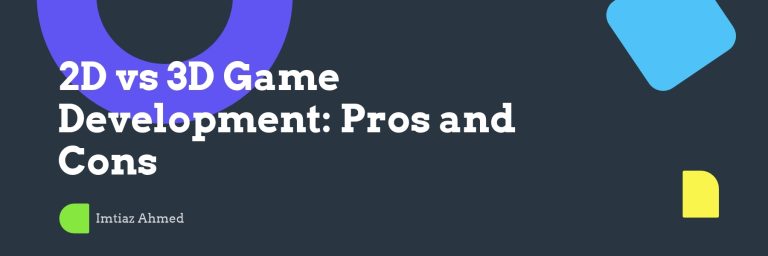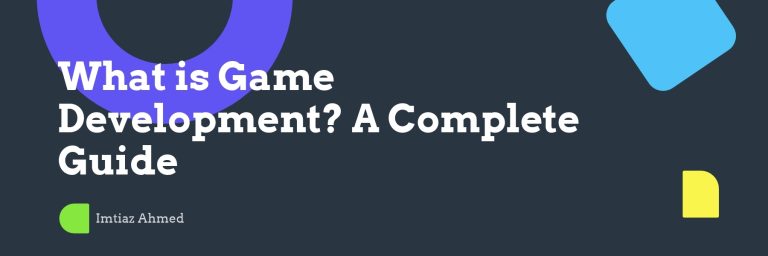Key Takeaways
Game development is a vibrant fusion of creativity, technology, and storytelling. Whether you’re a budding designer, aspiring coder, or simply curious about how your favorite games are built, this guide breaks down the core elements of the craft, from initial concepts to polished releases.
- Game dev is a creative problem‑solver, not just coding: While coding is vital, 70% of development focuses on design, balancing, and player experience. Think of it as crafting a living narrative rather than writing a program.
- Start with a solid design document: Outline mechanics, narrative, and goals to guide every subsequent step. A well‑structured doc serves as a living blueprint that evolves alongside the project.
- Learn the fundamentals of game engines: Unity, Unreal, and Godot provide the backbone for building playable prototypes. Each engine offers unique strengths—Unity for rapid iteration, Unreal for photorealism, Godot for lightweight, open‑source workflows.
- Master core programming concepts: C#, C++, and scripting languages form the language of interactive worlds. Understanding object‑oriented design, event handling, and state machines reduces bugs and speeds iteration.
- Build an efficient asset pipeline: From 2D sprites to 3D models, sound, and animation, seamless integration keeps projects on track. Automation, naming conventions, and version control for assets prevent bottlenecks.
- Iterate relentlessly with playtesting: Early feedback loops refine gameplay, fix bugs, and enhance fun. Data‑driven playtests inform balancing decisions and highlight hidden issues.
- Adopt agile workflows and version control: Git, Trello, and Scrum keep teams coordinated and projects scalable. Continuous integration and automated testing ensure a stable codebase.
- Explore diverse career paths: Indie dev, studio roles, and freelance opportunities cater to every skill set. Each path offers unique challenges and rewards.
- Leverage free resources and communities: Tutorials, forums, and open‑source projects accelerate learning and collaboration. Engaging with the community fuels growth and innovation.
Armed with these foundational insights, you’re ready to dive deeper into each facet of game development and transform your ideas into engaging, playable experiences.
Introduction
Did you know that 70 % of a game’s time is spent on design and balancing, not coding? That hidden layer of creativity is what makes a game feel alive—and that’s exactly what game development is all about.
Whether you’re sketching a character, debugging a physics engine, or just curious about how your favorite titles come to life, mastering the basics of game development unlocks the power to turn imagination into interactive reality. It’s not just about writing code; it’s about crafting experiences that keep players hooked.
In this guide we’ll break down the core elements—from solid design documents to agile workflows and asset pipelines—so you can start turning ideas into polished, playable games. Let’s dive in and explore the world of game development together.
What Is Game Development?
The Creative Core of Game Development
Game development blends storytelling, design, and technology to create interactive experiences.
At its heart, a game is a narrative canvas where players become active participants. The creative core involves worldbuilding, character arcs, and puzzle design that keep players engaged. For beginners, understanding this artistic side is as crucial as mastering code.
Beyond Coding: Design, Balance, and Player Experience
Understanding that 70% of a game’s time is spent on design highlights the importance of creativity in the process.
Design decisions—such as level layout, difficulty curves, and reward systems—shape how players feel and interact. A well-balanced mechanic can turn a simple idea into a memorable experience. For example, the indie hit Hollow Knight spent months iterating on combat flow before any code was written.
Because game development is 70 % creative problem‑solving, early prototyping and playtesting can save months of rework. This mindset encourages rapid experimentation and data‑driven refinement.
Transitioning to the foundational steps, the next section explains how to start with a clear design document.
Foundations of Game Dev Basics
Starting with a Solid Design Document
- Define mechanics, narrative, and goals.
- Serve as a roadmap for the entire project.
What is the first step in game dev? The answer is simple: draft a design document. Think of it as a blueprint that outlines every core feature, target audience, and success metric. Many studios, from Supergiant Games to indie teams, use this document to keep the vision aligned across artists, programmers, and producers.
Tips for a strong design doc:
- Keep it concise—one page per core mechanic.
- Use visuals: flowcharts, storyboards, and mood boards.
- Iterate early; update the doc as feedback arrives.
With a solid foundation, teams can move confidently into engine selection.
Choosing the Right Game Engine for Your Project
- Unity, Unreal, and Godot as popular options.
- Match engine strengths to project needs.
Engine choice can make or break a project. Unity excels with rapid prototyping and a vast asset store, ideal for mobile or 2D titles. Unreal Engine offers high-fidelity graphics and a powerful visual scripting system, perfect for AAA or VR experiences. Godot is lightweight, open‑source, and great for small teams or educational projects.
Consider factors such as:
- Platform targets: PC, console, mobile.
- Team skill set: C#, C++, GDScript.
- Budget: licensing costs and asset pipelines.
Choosing the right engine sets the technical tone for the rest of the development cycle.
Core Programming Concepts for Game Development
- Learn C#, C++, and scripting fundamentals.
- Apply logic to create interactive worlds.
Programming is the engine that brings design to life. Beginners should start with object‑oriented principles, event handling, and basic AI patterns. For example, a simple enemy AI loop can be written in C# within Unity:
public class EnemyAI : MonoBehaviour {
void Update() {
if (Vector3.Distance(transform.position, player.position) < 5f) {
// chase player
}
}
}
Understanding how to structure code—using components, inheritance, and modular design—reduces bugs and speeds iteration.
With programming fundamentals in place, the next step is to build the asset pipeline.
Building Your Asset Pipeline
2D and 3D Asset Production
- Create sprites, models, and textures.
- Maintain consistency across assets.
Assets are the visual language of a game. For 2D, tools like Adobe Photoshop or Aseprite help create clean sprites and tile sets. In 3D, Blender and Maya are industry staples. Consistency—color palettes, lighting, and scale—ensures a cohesive world.
Case study: Stardew Valley used pixel art with a limited palette to create a charming, timeless aesthetic that resonated with players worldwide.
Next, we’ll integrate audio, animation, and more.
Audio, Animation, and Integration
- Implement sound effects and music.
- Animate characters and objects smoothly.
Sound and motion breathe life into static assets. Use middleware like FMOD or Wwise to manage audio events, while Unity’s Animator or Unreal’s Sequencer handle skeletal animations. Syncing audio cues to gameplay—such as a jump sound on landing—enhances immersion.
Tip: Adopt a naming convention (e.g., “Enemy_01_Anim”) to keep the pipeline organized and reduce merge conflicts.
With assets polished, the game moves to iterative development.
Iterative Development and Playtesting
Early Feedback Loops
- Gather player input quickly.
- Adjust mechanics based on real data.
Rapid prototyping and playtesting are the lifeblood of a successful title. Set up a simple build—perhaps a single level—and share it with friends or community testers. Collect qualitative feedback (what feels fun?) and quantitative data (completion times, error rates).
Example: The indie team behind Celeste released weekly playtests, using player metrics to tweak platforming difficulty before the final release.
Early feedback loops reduce costly rework later in the cycle.
Bug Fixing and Balancing
- Identify and resolve issues efficiently.
- Ensure fair and engaging gameplay.
Bug tracking tools like Jira or GitHub Issues help prioritize fixes. Balancing involves adjusting parameters—enemy health, damage output, resource availability—to keep the game challenging yet fair. Playtesting data informs these adjustments.
Case study: Fortnite continually balances weapon stats through live data analysis, maintaining competitive integrity.
With bugs ironed out, the project can shift to agile workflows.
Agile Workflows and Version Control
Using Git, Trello, and Scrum in Game Programming
- Track changes and collaborate effectively.
- Plan sprints and manage tasks.
Version control is essential. Git allows multiple developers to work on the same codebase without overwriting each other’s changes. Pair it with a project management board—Trello or Jira—to visualize tasks, assign owners, and track progress.
Scrum ceremonies—sprint planning, daily stand‑ups, and retrospectives—keep the team focused. For example, a 2‑week sprint might target a complete level prototype, reviewed at the sprint demo.
Adopting these practices streamlines communication and keeps the project on schedule.
Career Paths in Video Game Creation
Indie Development, Studio Roles, and Freelancing
- Explore opportunities across the industry.
- Match skills to desired career paths.
Game development offers diverse roles: programmer, artist, designer, producer, and QA tester. Indie developers often wear multiple hats, while studio roles focus on specialization. Freelancers can pick projects that match their niche—e.g., level design or audio production.
Tip: Build a portfolio that showcases your best work and highlights the creative problem‑solving you bring to each project.
With career options mapped, the next step is to find supportive resources.
Resources and Communities for Aspiring Game Developers
Free Tutorials, Forums, and Open-Source Projects
- Accelerate learning through community support.
- Contribute to collaborative projects.
Platforms like Unity Learn, Unreal Online Learning, and Godot Docs provide structured tutorials. Forums such as Stack Overflow, Reddit r/gamedev, and GameDev.net allow you to ask questions and share progress.
Open‑source projects—like Godot Engine or OpenRA—offer real codebases to study, fork, and improve.
Engaging with these communities accelerates skill acquisition and opens networking doors.
Learning Paths and Mentorship Opportunities
- Follow structured courses and workshops.
- Seek guidance from experienced developers.
Structured learning paths—such as Coursera’s Game Design and Development or Udemy’s Unity courses—provide curriculum and certificates. Workshops at events like GDC or IndieCade expose you to industry practices.
Mentorship can be found through programs like GDC Mentoring or local game dev meetups. A mentor can offer feedback, career advice, and real‑world insights.
With knowledge consolidated, we’re ready to bring the concept to market.
Putting It All Together: From Concept to Release
Project Planning and Milestones
- Set realistic goals and timelines.
- Track progress with clear metrics.
Break the project into phases: pre‑production, production, polishing, and launch. Assign milestones—e.g., “Complete core mechanic prototype” or “Finish level 1 asset pack.” Track these with a Gantt chart or a simple spreadsheet.
Measure progress using metrics like build quality score (bug count per build) and engagement rate (time spent on a level). Data‑driven planning keeps the team aligned and stakeholders informed.
Once milestones are met, the focus shifts to final polish and publishing.
Polishing and Publishing Your Game
- Refine visuals, sound, and performance.
- Prepare for launch on chosen platforms.
Polishing involves optimizing frame rates, fixing UI glitches, and ensuring accessibility options. Test on target hardware—PC, console, or mobile—to catch platform‑specific issues.
Publishing requires platform compliance: Steamworks for PC, App Store Connect for iOS, or Google Play Console for Android. Each platform has submission guidelines and review timelines.
Case study: The indie hit Untitled Goose Game spent months polishing physics and audio, leading to a smooth launch and rapid sales growth.
With a polished product and a launch plan, your game is ready to enter the world of video game creation and captivate players worldwide.
Conclusion
Game development is a blend of narrative design, artistic craftsmanship, and technical execution, with creativity accounting for roughly 70 % of the effort. A clear design document, the right engine choice, and solid programming fundamentals lay the groundwork for a cohesive project. Iterative prototyping, rigorous playtesting, and agile workflows keep teams on schedule and responsive to player feedback. Whether you’re an indie creator, studio employee, or freelancer, building a strong portfolio, engaging with community resources, and seeking mentorship accelerate your growth. As the industry evolves, the most successful developers will continually iterate, balance, and polish—turning a vision into an immersive experience that resonates with players worldwide.





